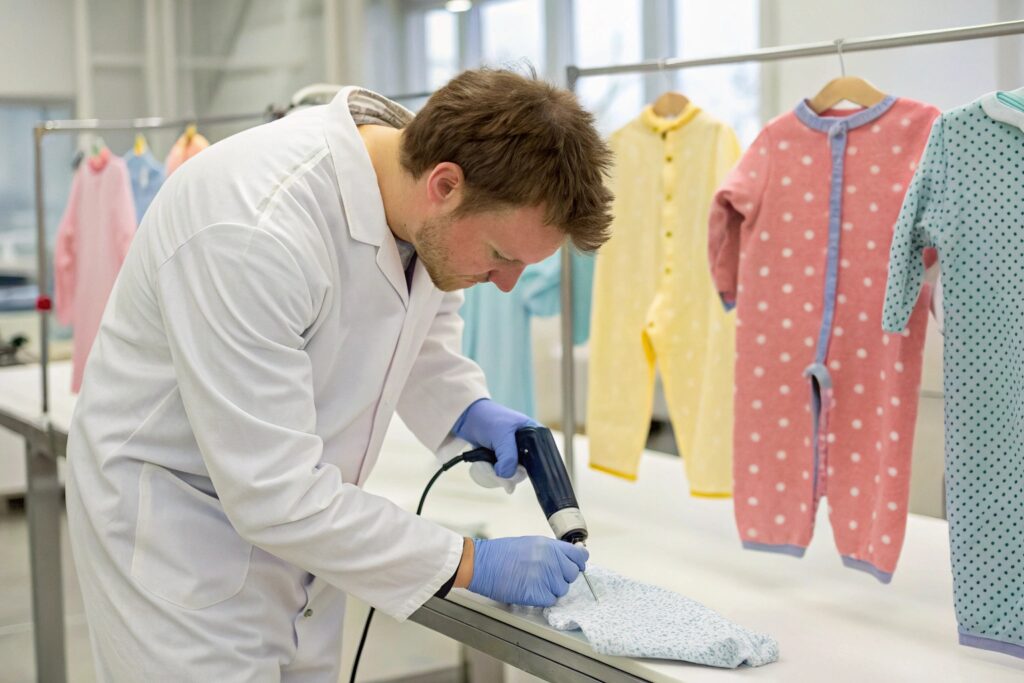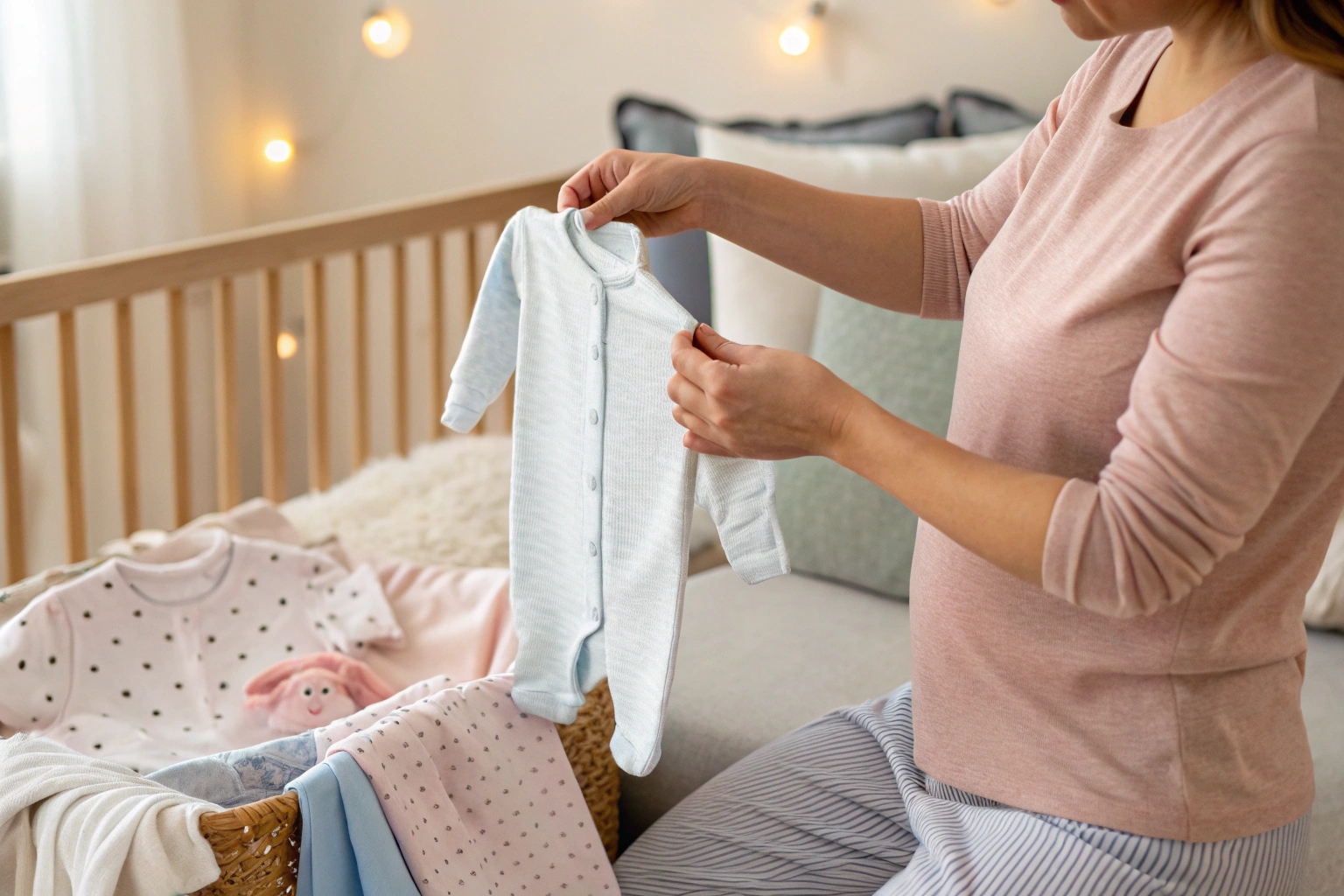For infants, clothing isn’t just about fashion—it’s about comfort, safety, and health. A baby’s skin is thinner, more absorbent, and more sensitive than an adult’s, which means fabric choice matters more than ever.
To choose the right fabric for infant garments, you need to prioritize softness, non-toxicity, breathability, and certification—ensuring every piece protects, soothes, and supports healthy skin.
Here’s how to choose babywear fabrics that parents trust and babies love to wear.
What Fabrics Are Best for Newborns with Sensitive Skin?
When it comes to dressing newborns, the simpler and purer the fabric—the better. Babies spend most of their time in direct contact with clothing, which means even the smallest irritant can cause rashes or discomfort.
The best fabrics for newborns are organic cotton, bamboo viscose, and modal—each known for softness, breathability, and skin-friendliness.

Top fabric choices for infants:
| Fabric Type | Key Benefits |
|---|---|
| Organic Cotton | Hypoallergenic, breathable, GOTS-certified options |
| Bamboo Viscose | Ultra-soft, moisture-wicking, antibacterial |
| Modal (from beechwood) | Smooth texture, stretchable, eco-friendly |
| TENCEL™ Lyocell | Silky feel, natural cooling, low environmental impact |
Fabrics to avoid:
- Polyester blends (not breathable, can irritate skin)
- Wool (can be too coarse or allergenic for sensitive babies)
- Fabrics with added finishes like wrinkle-resistant or water-repellent coatings
Natural, untreated, breathable fibers are always the safest bet.
How to Identify Non-Toxic and Hypoallergenic Materials?
Fabric labels often use buzzwords like “natural” or “gentle,” but real safety comes from testing and transparency—not marketing.
To identify truly hypoallergenic and non-toxic fabrics, look for standardized chemical testing and clear supply chain traceability.

How to check for safety:
- Look for fabrics that are free from harsh dyes, formaldehyde, and heavy metals
- Confirm the material is dyed with reactive or natural dyes (not AZO or heavy chemical dyes)
- Ask for MSDS (Material Safety Data Sheet) or chemical testing reports from suppliers
- Choose fabrics labeled “untreated,” “enzyme-washed,” or “low-impact dyed”
| Common Irritant | Safer Alternative |
|---|---|
| Formaldehyde finishes | Enzyme-washed cotton |
| Azo-based dyes | Natural pigment or fiber-reactive dyes |
| Flame retardants | Snug-fitting garments instead of chemical treatment |
| Chlorine bleaching | Hydrogen peroxide or unbleached fabrics |
Brands that prioritize ingredient transparency win long-term parent loyalty.
Why Certifications Like OEKO-TEX and GOTS Matter?
In a market flooded with vague “eco” claims, trusted certifications offer real assurance to both buyers and consumers.
OEKO-TEX® Standard 100 and GOTS are two of the most respected textile certifications for babywear, confirming safety, organic integrity, and ethical production.

What they verify:
| Certification | What It Ensures |
|---|---|
| OEKO-TEX® Standard 100 | Fabric has been tested for over 100 harmful substances |
| GOTS (Global Organic Textile Standard) | Fiber is organic + processed without toxic inputs under ethical labor conditions |
| Cotton USA / USDA Organic | Verifies the origin of organic cotton (but not processing) |
Why parents trust these labels:
- Proven safety for sensitive skin
- Transparent supply chains
- Ethical labor practices
- No greenwashing or vague claims
Certifications are a signal of seriousness and care, especially for brands targeting conscious parents or global markets.
Tips for Testing Fabric Softness Before Production?
Even the safest material must feel right on the skin. And softness isn’t just about fiber—it’s about finish, weave, and wash process.
Before launching any babywear line, testing fabric softness through sampling, lab assessment, and physical handling is essential.

Practical ways to test fabric softness:
- Request physical swatches from mills or wholesalers
- Compare hand-feel after washing—some fabrics stiffen or shrink
- Use the “skin touch test”—hold it against your neck or inner arm
- Test stretch recovery and pilling after 3–5 washes
- Lab-test with softness index scoring (e.g. Kawabata evaluation)
| Testing Method | What It Tells You |
|---|---|
| Washed vs unwashed test | Post-wash softness, shrinkage, colorfastness |
| Pilling test (Martindale or rub test) | Durability over time |
| Microscopy or thread count | Fiber quality + surface friction |
| Real babywearer reviews (if available) | Comfort feedback from actual users |
Only real-world and lab-based testing together guarantee softness that stands up to wear and wash.
Conclusion
Choosing safe and soft fabrics for infant garments is a non-negotiable for modern babywear brands. From organic cotton and bamboo to certified, lab-tested materials, every detail matters when it comes to protecting newborn skin. The right fabric isn’t just a feature—it’s the foundation of trust between you and the families you serve.










